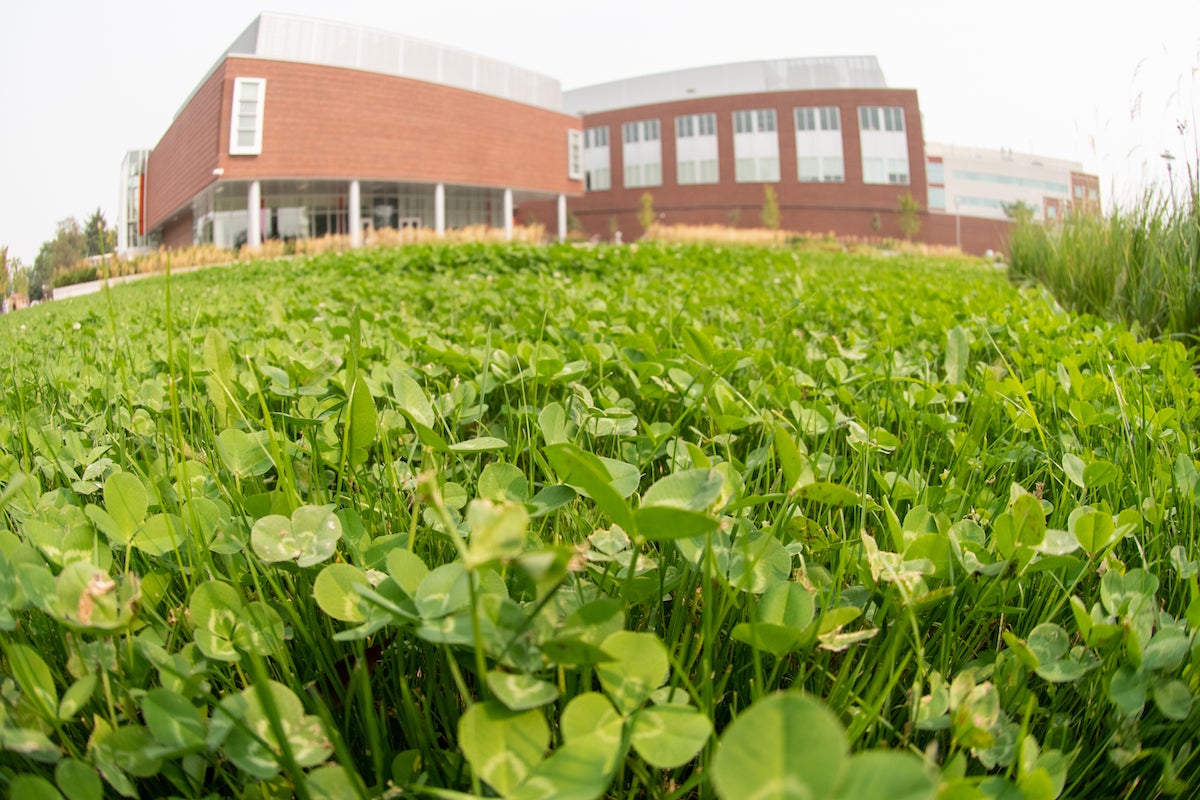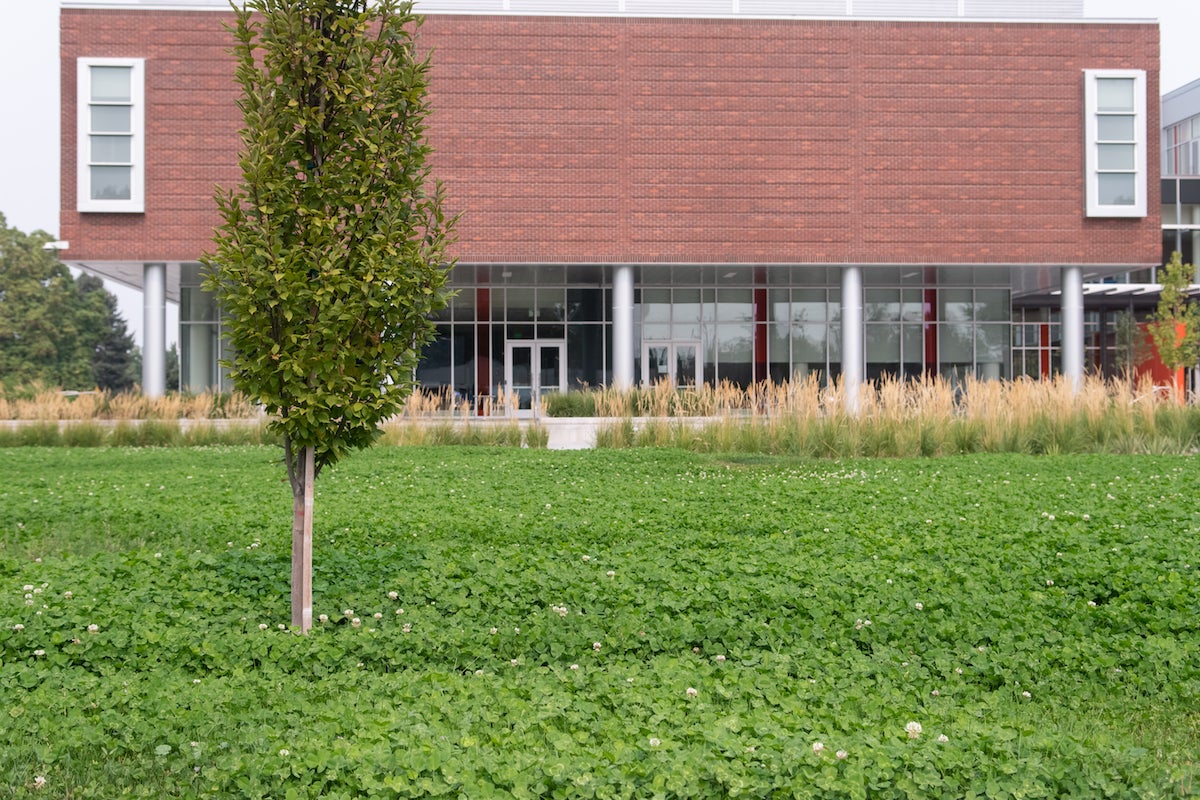
When Gabe Bishop, landscape services manager looks out on the turf area south of the new Micron Center for Materials Research Building he sees a “happy little ecosystem” at work.
What may appear, at first, to be an unkempt riot of clover spreading through a patch of lawn is actually a new turf seed blend being piloted by Bishop and his team. The seed is a mix of clover and fescue grasses that will require less watering, mowing and fertilization.
“The typical monoculture of grass variety that people expect for turf areas is not how grass grows in natural environments,” Bishop said.
The clover in the mix is extremely drought-tolerant and maintains a dark green color once established, requiring less irrigation. By including this with the fescue grass, the soil will retain more moisture in dry periods and sustain the grass through the summer.
The area will be more resilient to seasonal weather changes and the look will transition through the year.
“What we see now, in the summer, is the clover dominates but the fescue below is still really healthy,” Bishop said. “The clover is fixing nitrogen in the soil and will continue to feed the fescue grasses throughout the year, eliminating the need for additional fertilizer.”

Bishop is using this area as a trial and is considering this mix for other areas on campus. Boise State currently has 38 acres of turf to maintain and while Bishop has no intention to replace traditional grass in areas used for recreation or socializing, he does see potential for this mix in other areas.
“Because you have to mow this turf so much less often, about once a month in peak season, it would be great for those small patches in between trees or other plantings where we struggle to get our equipment around for mowing,” he said.
– By George Thoma